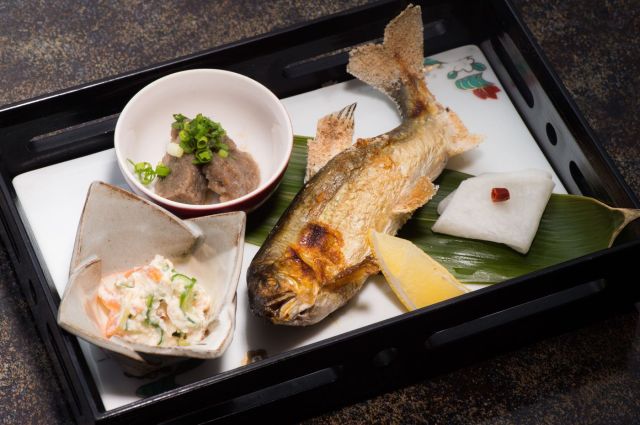
This will change the way you think about counting things in Japanese forever.
There are a lot of differences between English and Japanese that make learning the latter incredibly difficult.
Take the way that animals and people are counted, for instance. In English, you’d simply pop the number in front of the subject — “one cow”, “one bird”, “one person” and so on. But in Japanese, you have to attach a unique word to the number, depending on what the subject is. This requires study, practice, and patience, as around 500 counters exist in Japanese.
▼ “Do you know how to count me?”
Why do these counters exist, and how can you remember them? It’s a question that’s plagued not only students of the language for years, but Japanese people themselves, who are often as puzzled as the rest of us when asked about them.
However, Japanese Twitter user Mano Mano (@manomano_farm) recently shared a reason behind some of the counters for animals and people, and after sharing it online it blew everyone’s minds, earning over 383,000 likes from people who couldn’t believe they’d never made the connection before.
Are you ready to connect the dots behind the language conundrum? Prepare to have your mind blown as you read the translation of the below tweet, which will change the way you think about Japanese counters forever.
“An amazing thing I recently discovered is that ‘How to count animals is dependent on what remains after death’.
Cows and pigs are counted as “一頭” (“ittou”), birds are counted as “一羽” (“ichiwa”), and fish are counted as “一尾” (“ichibi”).
In other words, the counter is named after the part that’s not eaten or the part that remains.
And since humans leave behind their “名前” (“namae” or “name”) after they die, the counter for people is “一名” (ichimei).
Did you all know this? The scales have fallen from my eyes so I’m sharing it.”
最近知ったのですが「動物の数え方は死んだ後に何が残るかで決まる」って話がすごい。牛豚は「一頭」、鳥は「一羽」、魚は「一尾」つまり食べられない部位、残る部位で呼ぶらしい。そして人間は死んでから「名前」が残るから「一名」なんだって。これみんな知ってた?目から鱗だったのでシェアします😌
— マノマノ🌾 (@manomano_farm) April 18, 2022
The scales certainly fell from our eyes too, as it did for thousands of other people around Japan upon hearing this revelation.
So let’s unpack some of the details from the tweet.
When Mano Mano says “Cows and pigs are counted as “一頭” (“ittou”)“, this is the counter for one animal, as it has the kanji for “one” (“一”) in front of the kanji counter. That’s the case for all the counters mentioned, and if you were to describe more than one animal, you would change that number accordingly.
▼ “Ittou? Correct.”
However, the really interesting part comes with the counter itself. The kanji used to count cows and pigs (and other large animals like elephants and tigers) is “頭“, which is the kanji for “head”. Some people believe this counter originates from the end of the Meiji era (1868-1912), when Japan adopted the Western style of counting livestock by the head. However, the skulls of these large animals also invoke impactful imagery that are synonymous with the remains of giant animals.
Taking a look at the other mentions in the tweet, the counter for birds is “羽“, which is the kanji for “wing“, while the counter for fish is “尾” (“tail“). When you think about it, one of the most distinguishing features of a fossilised bird skeleton is the wings, and when it comes to fish, people often leave the tail behind, so you’d be able to count how many fish you’ve eaten by counting the tails.
▼ Small-boned fish like this are often eaten whole in Japan, although later in the season the tails can be hard, prompting people to leave the tails on their plate.
Of course, there are exceptions to the rule, as there always have been — take rabbits, for instance, which use the “羽” counter despite not having wings. There are theories for these discrepancies too, though, with some saying the rabbit counter came about because monks weren’t allowed to eat quadrupeds for religious reasons, so counting rabbits’ ears as “wings” allowed them to get around that fact.
The most poetic takeaway from Mano Mano’s tweet, though, is the notion that all humans leave behind is their name. This is particularly poignant in Japan, where people are given a new name after they die, to avoid them returning to this world when their former name is spoken.
The theory that counters are connected to what an animal or person leaves behind is an intriguing one that provides us with a lot of food for thought. It’s certainly a handy tool to help us remember some of the counters and how to identify them, which is much needed when there are still so many more counters in the language to master!
Source: Twitter/@manomano_farm via Hachima Kikou
Featured image: Pakutaso (edited by SoraNews24)
Insert images: Pakutaso (1, 2,)
● Want to hear about SoraNews24’s latest articles as soon as they’re published? Follow us on Facebook and Twitter!



 Counting in Japanese just became a whole lot easier with this handy infographic
Counting in Japanese just became a whole lot easier with this handy infographic Japan’s first-ever micro pig cafe opens in Tokyo 【Pics & Video】
Japan’s first-ever micro pig cafe opens in Tokyo 【Pics & Video】 We know it’s hard, Super Mario fans, but please resist the urge to punch this Tokyo Station sign
We know it’s hard, Super Mario fans, but please resist the urge to punch this Tokyo Station sign Does Japan’s five-yen coin need a foreigner-friendly redesign?
Does Japan’s five-yen coin need a foreigner-friendly redesign? Is pachinko headed for extinction in Japan? Studies reveal huge drop in players, hall operators
Is pachinko headed for extinction in Japan? Studies reveal huge drop in players, hall operators Seaside scenery, history, and so many desserts on Yokohama’s Akai Kutsu【Japan Loop Buses】
Seaside scenery, history, and so many desserts on Yokohama’s Akai Kutsu【Japan Loop Buses】 Foreigner’s request for help in Tokyo makes us sad for the state of society
Foreigner’s request for help in Tokyo makes us sad for the state of society Japanese city loses residents’ personal data, which was on paper being transported on a windy day
Japanese city loses residents’ personal data, which was on paper being transported on a windy day Ghibli Park now selling “Grilled Frogs” from food cart in Valley of Witches
Ghibli Park now selling “Grilled Frogs” from food cart in Valley of Witches Princesses, fruits, and blacksmiths: Study reveals the 30 most unusual family names in Japan
Princesses, fruits, and blacksmiths: Study reveals the 30 most unusual family names in Japan Historical figures get manga makeovers from artists of Spy x Family, My Hero Academia and more
Historical figures get manga makeovers from artists of Spy x Family, My Hero Academia and more Celebrate another year of life by putting it in jeopardy with this birthday candle flower
Celebrate another year of life by putting it in jeopardy with this birthday candle flower Should you add tartar sauce to Japanese curry rice? CoCo Ichi makes diners an unusual offer
Should you add tartar sauce to Japanese curry rice? CoCo Ichi makes diners an unusual offer Japanese woman stumbles on the power of the infamous “gaijin seat” phenomenon during flight
Japanese woman stumbles on the power of the infamous “gaijin seat” phenomenon during flight French Fries Bread in Tokyo’s Shibuya becomes a hit on social media
French Fries Bread in Tokyo’s Shibuya becomes a hit on social media McDonald’s new Happy Meals offer up cute and practical Sanrio lifestyle goods
McDonald’s new Happy Meals offer up cute and practical Sanrio lifestyle goods Japanese ramen restaurants under pressure from new yen banknotes
Japanese ramen restaurants under pressure from new yen banknotes Studio Ghibli releases new action figures featuring Nausicaä of the Valley of the Wind characters
Studio Ghibli releases new action figures featuring Nausicaä of the Valley of the Wind characters Red light district sushi restaurant in Tokyo shows us just how wrong we were about it
Red light district sushi restaurant in Tokyo shows us just how wrong we were about it New private rooms on Tokaido Shinkansen change the way we travel from Tokyo to Kyoto
New private rooms on Tokaido Shinkansen change the way we travel from Tokyo to Kyoto Tokyo Tsukiji fish market site to be redeveloped with 50,000-seat stadium, hotel, shopping center
Tokyo Tsukiji fish market site to be redeveloped with 50,000-seat stadium, hotel, shopping center Beautiful Ghibli sealing wax kits let you create accessories and elegant letter decorations【Pics】
Beautiful Ghibli sealing wax kits let you create accessories and elegant letter decorations【Pics】 Studio Ghibli releases Kiki’s Delivery Service chocolate cake pouches in Japan
Studio Ghibli releases Kiki’s Delivery Service chocolate cake pouches in Japan New definition of “Japanese whiskey” goes into effect to prevent fakes from fooling overseas buyers
New definition of “Japanese whiskey” goes into effect to prevent fakes from fooling overseas buyers Our Japanese reporter visits Costco in the U.S., finds super American and very Japanese things
Our Japanese reporter visits Costco in the U.S., finds super American and very Japanese things All-you-can-drink Starbucks and amazing views part of Tokyo’s new 170 meter-high sky lounge
All-you-can-drink Starbucks and amazing views part of Tokyo’s new 170 meter-high sky lounge More foreign tourists than ever before in history visited Japan last month
More foreign tourists than ever before in history visited Japan last month New Pokémon cakes let you eat your way through Pikachu and all the Eevee evolutions
New Pokémon cakes let you eat your way through Pikachu and all the Eevee evolutions Disney princesses get official manga makeovers for Manga Princess Cafe opening in Tokyo
Disney princesses get official manga makeovers for Manga Princess Cafe opening in Tokyo Sales of Japan’s most convenient train ticket/shopping payment cards suspended indefinitely
Sales of Japan’s most convenient train ticket/shopping payment cards suspended indefinitely Sold-out Studio Ghibli desktop humidifiers are back so Totoro can help you through the dry season
Sold-out Studio Ghibli desktop humidifiers are back so Totoro can help you through the dry season Japanese government to make first change to romanization spelling rules since the 1950s
Japanese government to make first change to romanization spelling rules since the 1950s Ghibli founders Toshio Suzuki and Hayao Miyazaki contribute to Japanese whisky Totoro label design
Ghibli founders Toshio Suzuki and Hayao Miyazaki contribute to Japanese whisky Totoro label design Doraemon found buried at sea as scene from 1993 anime becomes real life【Photos】
Doraemon found buried at sea as scene from 1993 anime becomes real life【Photos】 Tokyo’s most famous Starbucks is closed
Tokyo’s most famous Starbucks is closed One Piece characters’ nationalities revealed, but fans have mixed opinions
One Piece characters’ nationalities revealed, but fans have mixed opinions We asked a Uniqlo employee what four things we should buy and their suggestions didn’t disappoint
We asked a Uniqlo employee what four things we should buy and their suggestions didn’t disappoint Hundreds of fish take over abandoned shopping mall in Bangkok
Hundreds of fish take over abandoned shopping mall in Bangkok Tokyo Station’s second-most popular bento is great because of what it isn’t【Taste test】
Tokyo Station’s second-most popular bento is great because of what it isn’t【Taste test】 Beef bowl chain Yoshinoya’s historic first store to close, special countdown site launched!
Beef bowl chain Yoshinoya’s historic first store to close, special countdown site launched! Hungry Japanese cat runs out of patience, teaches owner embarrassing lesson about sharing 【Video】
Hungry Japanese cat runs out of patience, teaches owner embarrassing lesson about sharing 【Video】 Three drinks you should try at Starbucks right now, according to staff who work there
Three drinks you should try at Starbucks right now, according to staff who work there The method to save a seat in Japan shows how awesomely safe the country is【Video】
The method to save a seat in Japan shows how awesomely safe the country is【Video】 Japanese government plans removal of around 2,485 miles’ worth of overhead power lines
Japanese government plans removal of around 2,485 miles’ worth of overhead power lines Deer in Nara Park mysteriously disappear during this year’s shikadamari season
Deer in Nara Park mysteriously disappear during this year’s shikadamari season Taiwanese model selling fish draws a crowd to her family’s business【Videos】
Taiwanese model selling fish draws a crowd to her family’s business【Videos】 Saizeriya’s private solo booths are one of the best places to work, drink and eat in Japan
Saizeriya’s private solo booths are one of the best places to work, drink and eat in Japan Drink like an ox, eat like a horse! Five Japanese idiomatic phrases to celebrate Year of the Ox
Drink like an ox, eat like a horse! Five Japanese idiomatic phrases to celebrate Year of the Ox Japanese company creates “business card masks” that put your name and workplace on your face
Japanese company creates “business card masks” that put your name and workplace on your face Tokyo convenience store has full bar inside with Japanese whiskey, will smoke your combini snacks
Tokyo convenience store has full bar inside with Japanese whiskey, will smoke your combini snacks Poop Flinging Game – Literal weird crap from Japanese capsule toy machines【Photos】
Poop Flinging Game – Literal weird crap from Japanese capsule toy machines【Photos】
Leave a Reply